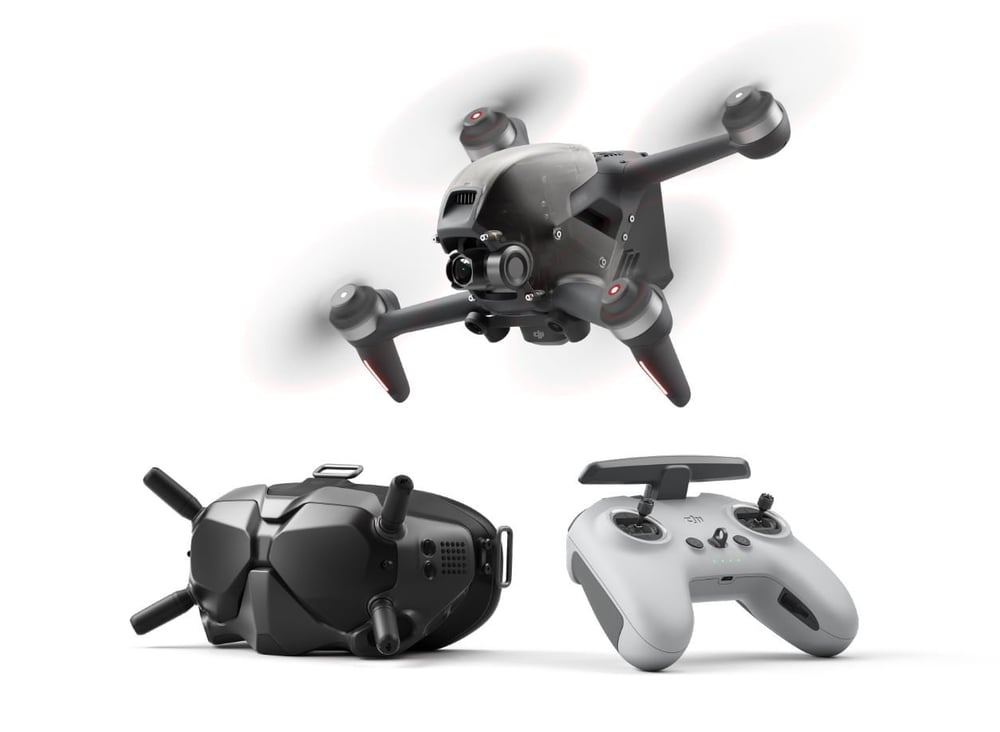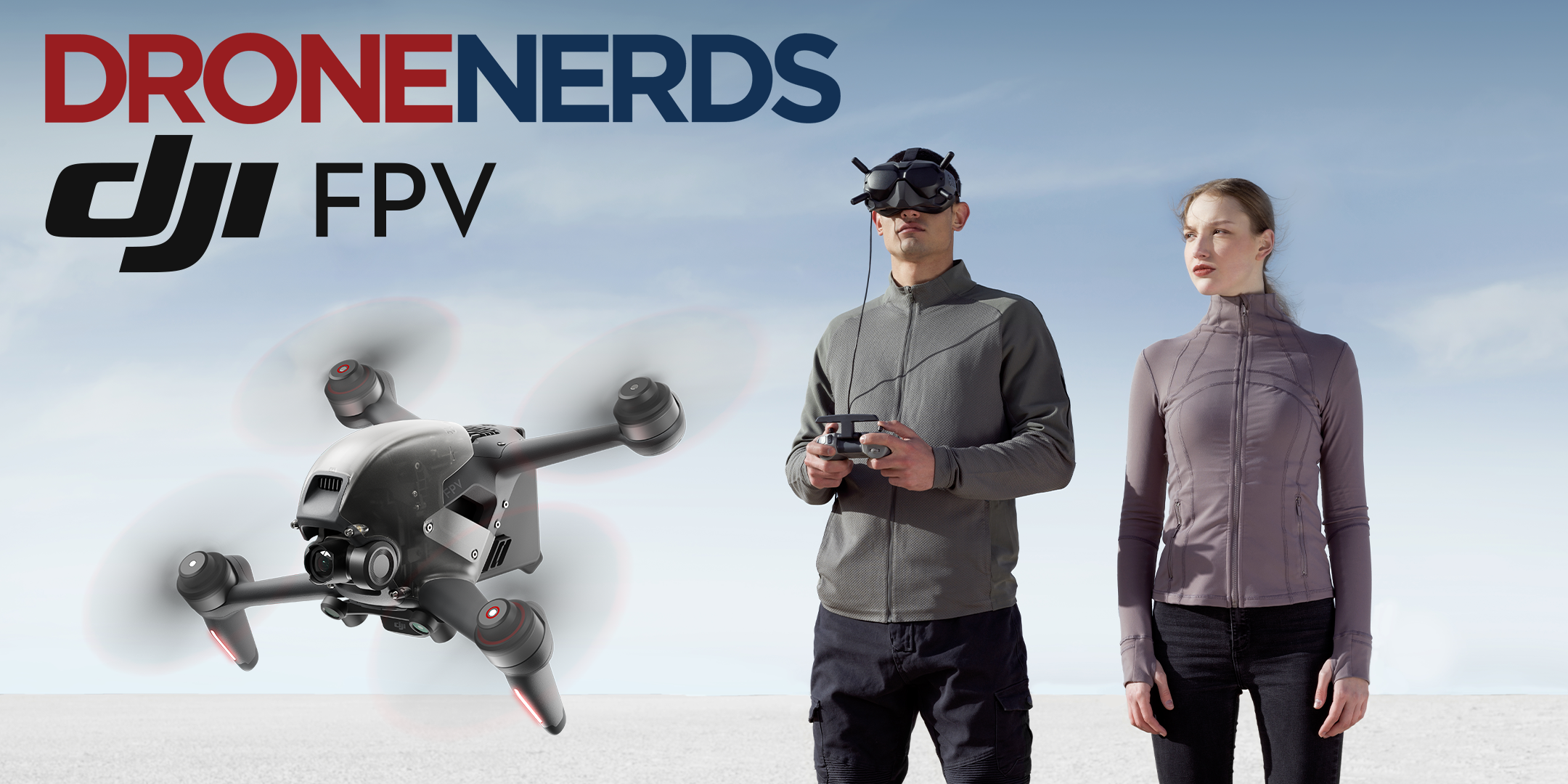DJI FPV and the FPV Drone Experience

It’s not heresy, but it is unusual: The DJI FPV is a first-person-view drone that’s ready-to-fly right out of the box.

Don’t believe It? Come and see the FPV beginning at 11 a.m. on Saturday, March 20, at DJI Wynwood, 2349 Northwest 2nd Ave., Miami. The event, the DJI FPV Drone Experience, lets you try an FPV simulator free and earn an FPV discount. There will be giveaways, too. Register here.
Don’t scoff at the simulator. If simulators are good enough for commercial airline and military pilots, as well as astronauts, they should absolutely thrill the rest of us.
Speed makes flying the DJI FPV different from flying other DJI drones, although if you’ve flown other models—Phantoms, Mavics, even Minis—there’s a certain familiarity. That’s thanks largely to placement of controls on the handheld remote.
The DJI FPV, although similar to competing FPV drones, separates itself from them in significant ways.
What—No Soldering?
After the simple jobs of attaching the props and updating firmware, we were ready to go. DJI FPV has a camera already mounted, a highly capable handheld remote controller, and in the combo, DJI’s new virtual reality goggles. The VR2 Goggles made the flight experience seductively immersive. The goggles have a memory card holder included.
The tidy remote controller, shaped like a game controller, conveniently works much like other traditionally styled DJI remotes. Available but not included is a revolutionary pistol-grip motion controller. Tilt it to either side, and the drone banks accordingly. Tilt up or down and the drone follows. It has a trigger control for speed and thumb controls.
Get the Drone Combo for $1,299.
Fast, Challenging
The DJI FPV employs DJI’s super-clear OcuSync 3.0 transmission system. Good thing, because this drone sizzles and the pilot needs to see very clearly what’s ahead. OcuSync 3.0 transmits from as far as 6.2 miles. Top speed is a claimed 62 mph. Tree branches, cables and rises came up quickly for a pilot not accustomed to high-speed flight.
Acceleration of the 1.75-pound FPV was a rush, officially 0-62 mph in 2 seconds. You pay $200,000-plus for a car that can do that. Uh, OK—the car would have actual seats.
FPV drones are intended for racing, which the DJI FPV does in its high-performance S Mode. Video captured in this sport mode can be downright breathtaking, especially when the drone squeezes through compact openings at speed.
If you’re out for a more leisurely spin, to capture the scenery, the FPV includes something few other first-person-view drones offer: obstacle avoidance sensors in front and below, active up to 30 mph in N Mode.
Flying in normal mode was similar to flying more mainstream DJI drones. Don’t be embarrassed to start with N Mode and work your way up. Those of us relatively inexperienced in FPV flight found it useful.
When an obstacle was detected, the DJI FPV used its emergency braking and hovered, awaiting the pilot’s command. Mid-air braking was surprisingly effective, and it could be triggered manually with the remote controller.
M Mode is completely manual with settings for sensitivity to the controls, also helpful in pilot development.
Superior Camera
The camera is mounted not on a 3-axis gimbal, but instead on a single-axis (vertical) gimbal. It uses a 1/2.3-inch CMOS 12MP sensor that can capture video and stills on the same flight. Electronic image stabilization (EIS) that DJI calls RockSteady Stabilization eliminates video shakes. There was little evidence that video was stabilized electronically instead of mechanically.
The props showed sometimes in corners of the video because of the camera’s extra wide, 150-degree view. At speed, though, the props’ appearance was actually helpful in judging tight maneuvers. Removing them from recordings in post-production was quick and easy.
While the Mini 2 can record 4K video, it does so at 24 frames per second, well shy of slow-motion quality. In the FPV, 4K is recorded at 60fps and transferred at 120Mbps. Super-fast flight video acquired a dramatic flair in slow motion. If you can settle for 1080p, a frame rate of 120fps allows super slo mo. Yeah, it’s totally cool after watching the blur of high speeds—or the other way around.
Battery
Most first-person drones struggle for flight times approaching 10 minutes, and some 5 minutes. The DJI FPV can fly nearly 20 minutes at normal speeds and into the low teens at high speed—just stellar battery performance.
The kit has just one battery. Spares are available individually, or in a pair as the FPV Fly More Kit.
FPV With GPS
Unlike typical first-person drones, the DJI FPV has GPS. That’s especially helpful, of course, when shooting a certain area or stationery subject, leaving it, and returning to shoot again. More importantly, it allows Return to Home, which activates automatically if you fly beyond the signal, run low on battery reserve or just want to get back to base.
GPS also enables the Find My Drone feature, which helps you locate your drone if it went down where you can’t see it.
